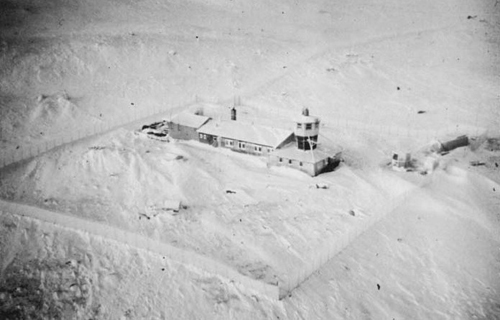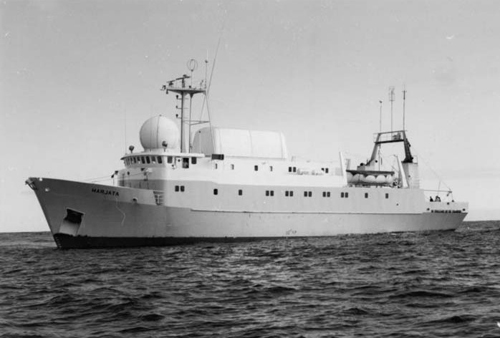The Wizards of Langley (43 page)
Read The Wizards of Langley Online
Authors: Jeffrey T Richelson

Chin’s life as a double agent, indeed his life, was undone by Yu Shensan, the son of two prominent Chinese revolutionaries. Before his defection in 1986, Yu headed the Foreign Affairs Bureau of the Ministry of State Security, which had been established in 1983 to improve coordination of China’s foreign intelligence operations and reduce leaks of internal government discussions. The new ministry took over the intelligence, coun
terintelligence, and security functions of the Ministry of Public Security, as well as the intelligence functions of the Investigation Department.
71
Yu was able to provide the United States with extensive information about Chinese intelligence operations abroad, including the names of Chinese agents. He may have provided information concerning Chin’s activities, possibly as early as 1982, the year the FBI first placed a wiretap on Chin’s phone.
72
Chin’s jury returned a guilty verdict on February 6, 1986. Sometime during the early morning of February 21, he tied a garbage bag over his head. Discovered by a guard at 8:45, he was pronounced dead forty-five minutes later.
73
Chin’s treason did far more harm to the CIA’s sensitive collection operations than to those of FBIS, which continued to monitor and analyze the foreign media. A change in policy leading to the February 1989 Soviet military withdrawal from Afghanistan was identified in FBIS media analysis. During May 1989, FBIS monitoring of Chinese radio broadcasts provided important information on the support for the student protesters in Beijing. The reports indicated that 40,000 students, teachers, and writers in Chengdu marched in support of democracy in mid-May. Altogether, radio reports indicated that there had been demonstrations of more than 10,000 people in at least nine other provinces.
74
During the mid-1960s, the DS&T had deployed a number of emplaced sensor systems—such as those targeted on the Chinese missile program or those that Leslie Dirks referred to in his testimony in the trial of Christopher Boyce. In
VEIL
, Bob Woodward described a system designated CERVICAL RUB—“a sophisticated electronic device disguised and constructed to look like a tree limb, complete with bark covering.” It was to be “planted” in a tree outside a Soviet air base in Eastern Europe to collect data on advanced Soviet MiG radars. There was also a round device camouflaged as a tree stump and discovered near a military facility that could transmit the data collected to a satellite.
75
There was also TAW. In 1979, the CIA had discovered that the Soviets were building a highly secret communications center near Troitsk, a town twenty-five miles southwest of Moscow. Underground tunnels connected the center to the headquarters of the KGB’s foreign directorate at Yasenovo as well as main headquarters in Moscow. Running through the tunnels were cables for telephone, fax machines, and teletype—all of which
the KGB believed to be secure. However, the CIA had managed to bribe a member of the construction crew, who provided the agency with the blueprint for the tunnels. In 1980, a CIA technician, possibly from OTS or OSO, left the U.S. embassy in Moscow hidden in a van. After determining the van was not under surveillance, its driver took him to a remote area, where the technician jumped from the van and hid in the woods. After locating the tunnel, he climbed inside and installed a monitoring and recording device. The coup gave the CIA an ability to record the KGB’s most sensitive communications traffic in the Soviet Union.
76
ABSORB was the result of the directorate’s desire to determine the number of warheads carried by Soviet missiles. Those numbers could be estimated from missile telemetry but depended on some assumptions. The United States had never actually seen inside a Soviet missile nose cone to verify the number of warheads being carried. ABSORB did not let the CIA look inside but rather provided an indirect means of assessing warhead numbers. It was known that each warhead emitted a tiny amount of radiation. By measuring the amount of radiation being emitted from each missile, the system could help analysts determine just how many warheads sat on top of the missile. The problem was how to get an accurate radiation reading.
77
Someone realized that most Soviet nuclear warheads were manufactured in the western USSR and shipped over the Ural Mountains to the Far East, where they were installed on missiles. The only way the Soviets could move those warheads was on the Trans-Siberian Railroad, which starts in Moscow and travels about 5,750 miles east until it arrives at Vladivostok. Branch lines connect Moscow with the rest of Europe. A train from Vladivostok to Moscow had a good chance, at some point in its journey, of passing an eastbound train carrying a nuclear cargo. Even though the trains might pass for only a few seconds, an advanced Geiger counter on the westbound train might be able to get a reading.
78
By 1983, the CIA had spent about $50 million on the project but had not yet perfected its Radiation Detection Device (RDD)—although it had made some interesting test runs. One test involved hiding a number of sophisticated cameras inside a false wall built in the side of a cargo container. A friendly Japanese company agreed to ship the container across the Soviet Union, from Vladivostok to Eastern Europe. The cameras would snap photographs whenever a train crossed the connecting track. Many of the tracks connected the railway to military manufacturing plants, so each time a train went by a weapons plant, the cameras snapped a photograph for the CIA. Thus, the CIA knew that ABSORB was possible. While the RDD was still
being developed, the CIA sent another rigged container, with electronic sensors, to Japan. In February 1986, it learned that the KGB had stopped a cargo container filled with electronic sensors. ABSORB was over before it began. TAW and ABSORB had been betrayed to the KGB by Aldrich Ames in 1985, although that was not known at the time.
79
The CIA had also deployed seismic sensors in East Germany. In one operation, nuclear detection equipment was installed in a series of road posts on an East German road. The equipment transmitted back to an antenna on a pile of rubble in West Berlin. In another instance, seismic monitoring devices were placed underground, near a road. The data they transmitted (to a satellite) allowed intelligence analysts to differentiate among seven different weight classes, including those for jeeps, passenger cars, trucks, and tanks.
80
The design of such systems was handled by various offices in the directorate—usually either research and development, development and engineering, or SIGINT operations offices. Many of the projects, such as the seismic systems, fell in the category of MASINT (Measurement and Signature Intelligence). Intelligence was derived from the data collected by such systems through the analysis of acoustic or seismic signals (which did not fall within the electronic signals covered by the SIGINT designation), of debris from an explosion, or of the heat emitted by an object.
The DS&T had achieved some successes by 1987, but Hineman believed they were not enough.
81
There were also some notable failures. In the early 1980s, the counterintelligence services of several East European countries, including Bulgaria, discovered a number of emplaced sensor systems near air bases, ammunition depots, and other strategic sites. The systems were camouflaged as tree limbs, rocks, and other natural objects. In 1983, the CIA gave an individual it believed was an asset, but who was actually a double agent, three of the devices. He quickly turned them over to the East German Ministry of State Security, which then consulted the KGB. The East Germans’ Soviet colleagues informed them that similar gadgets had been found in the Soviet Union. Eventually it became clear that the devices recorded traffic around the strategic sites or registered the emissions from nuclear weapons.
82
Hineman later recalled that as the world evolved and more was discovered about intelligence, countries took countermeasures. The United States needed to develop new capabilities and new technologies, to get closer and closer access.
83
One problem that Hineman believed was plaguing the program was a lack of proper coordination among the different groups that set requirements,
developed the system, deployed the system, and exfiltrated the data. Those in the operations directorate designated to deploy a device in a tree might discover only months or years into development that the device weighed a hundred pounds. To get everybody on the same page from the beginning, it made sense, in Hineman’s view, to put everybody in the same organization—so that they could understand problems and difficulties and influence the design.
84
Just as Bud Wheelon had removed the responsibility for satellites from OSA and created the Special Projects Staff in 1963, Hineman removed the responsibility for emplaced sensors from the other directorate offices and placed it in a new Special Projects Staff in summer 1987. At the beginning of the 1988 fiscal year, it became the Office of Special Projects. The office’s director was “responsible for the development and operational support of [emplaced sensor] systems to collect Measurement and Signature Intelligence, Nuclear and Signals Intelligence.” In order to carry out that mission, the office was to analyze potential targets, plan the operation, develop collective devices appropriate for the specific targets, and provide operational support during deployment. It was headed by a DS&T official, Gary Goodrich. Its chief of operations came from the operations directorate, its Systems Development Group came from the SIGINT and development and engineering units, and its Collection Group came from the Office of SIGINT Operations.
85
In Hineman’s view, the creation of the separate office improved the em-placed sensor program. As with all such changes, there were some who were less than enthusiastic. Robert Phillips, who worked on a clandestine program that wound up in OSP, acknowledged the importance and sensitivity of the programs. But he wondered if the growing size of OSO helped create a bureaucratic requirement to establish OSP as a way to authorize more Senior Intelligence Service positions, equivalent to Senior Executive Service positions.
86
According to Phillips, Hineman told him that he wanted more management attention devoted to the emplaced sensor programs. The political fallout from being caught in unacknowledged operations using invasive techniques even in friendly countries could be enormous. But after four years the program had less management than before. OSP was just another bureaucracy and “provided no added value,” and it “didn’t help solve problems.” The people from OSO who formed the core of OSP, Phillips believed, “should have stayed in OSO.”
87
In a few years, both OSP and OSO would disappear and be reunited under a new name.

The CIA has funded a number of SIGINT facilities operated by U.S. allies. The functions of
this Norwegian facility, code-named METRO, which began operations in 1958, included the
interception of Soviet missile telemetry.
CREDIT
: Norwegian Intelligence Service

(top left) The Marjata II was among the Norwegian vessels that carried eavesdropping
equipment to spy on Soviet naval activities, equipment provided by the CIA.
CREDIT
: Norwegian
Intelligence Service

(bottom left) A U-2 reconnaissance aircraft, developed by the Lockheed Corporation for
the CIA. CIA U-2 flights began in 1956 and continued until 1974 when the Air Force assumed
full control of U-2 operations. The first CIA U-2 flights helped end fears of a
“bomber gap.”
CREDIT
: Lockheed
